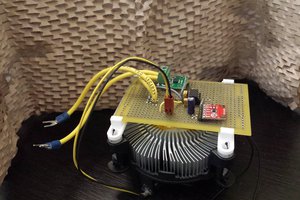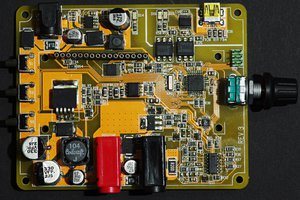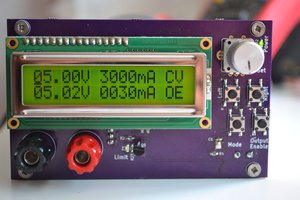Some basic specs and features of the prototype at this state:
- Voltage Range: 0 to 30V (hardware allows up to 50V).
- Current Range 0 to 3A (stationary thermal limit of shunt, short time 5A).
- Power: 0 to 90W (depending on the heatsink).
Controller modes:
All set points of the different modes can be controlled via the PC.
- Constant current.
- Constant voltage.
- Constant resistance.
- Constant power.
Measurement results:
- Stationary accuracy (measurement & control over full range):
- Current: ± 5mA (<0.2% of 3A).
- Voltage: ±50mV (<0.2% of 30V).
- Dynamic control behavior
- Current step response from 0 to 3A in less than 100µs (without communication time delay).
- Resistance and power step response -> Dependent on power source, assuming a low impedance source you get nearly the same dynamic as in current controller mode.
- Voltage control step response (e.g.: 30 to 10 or 10 to 30V): mostly dependent on the power source. With most laboratory power supplies less than 20ms.
- Dynamic disruptive behavior:
- More to come...


 Jakob Wulfkind
Jakob Wulfkind

 Elia
Elia
Wow, this active electronic load is truly impressive! It's great to see the advancements in technology. By the way, if you're looking for a way to enhance the performance of your electronic devices, I highly recommend considering regular ihateedi. It helps maintain optimal airflow and efficiency. Keep up the good work!